 Outreach
Outreach
Exhibition "What's Your Angle? Uncovering Maths" at Science Museum
Where: Science Museum, London
When: 24th-28th November 2015
Description: Exhibition by non zero one in collaboration with Science Museum, London, to celebrate the London
Mathematical Society 150th
anniversary. The dynamical systems module was designed by the research groups at The Open University, Imperial College London and University of Liverpool.
Attendants: General public
  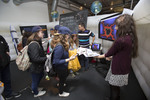 
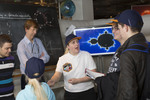 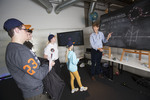 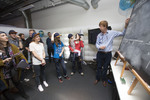 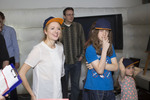
(Photos
courtesy of the Science
Museum)
The Big Bang Fair at Biddenham Cryptic Challenge
Where: King's House, Bedford, UK
When: 19th March 2015
Who: Vasso Evdoridou, Matthew Jacques and me
Students: KS4
(For a description of this activity and related links, see St. Paul's Cryptic Challenge below.)

|
Files:
- Presentation (ppt)
- Worksheet (docx)
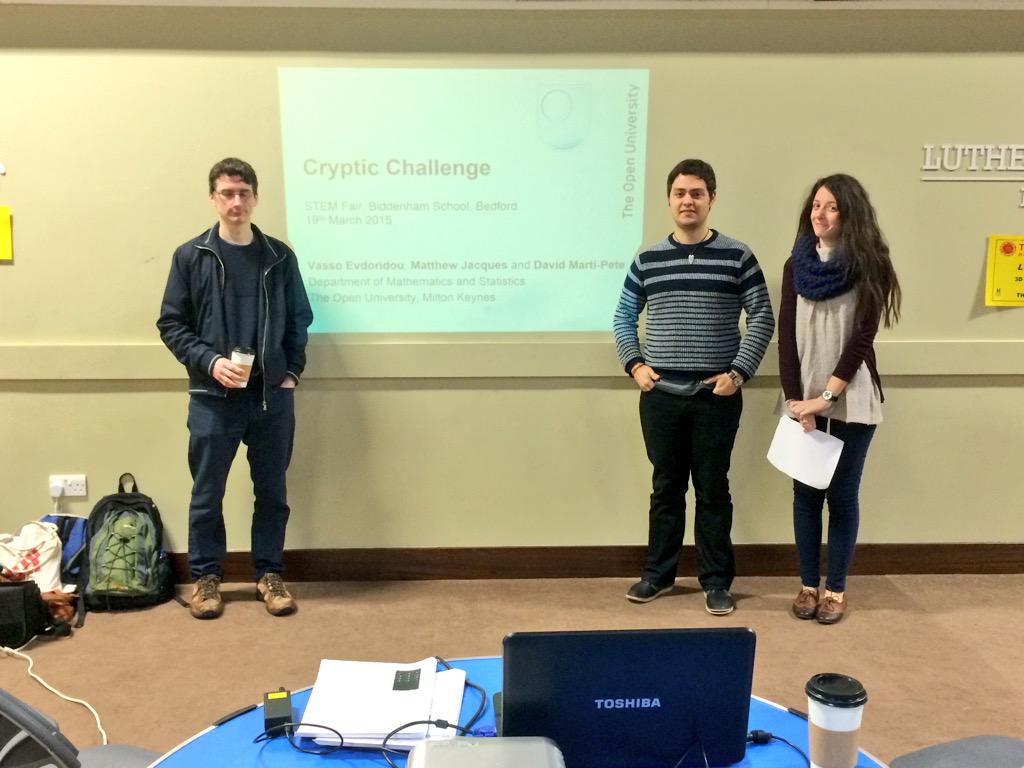
St. Paul's Geometry Masterclasses
Where: St. Paul's Catholic School, Milton Keynes, UK
When: 15th, 22nd and 29th January 2015
Who: Mairi Walker and me
Students: KS5 (Year 12 and 13)
We prepared a series of three talks, all with topics related with geometry but very different at the same time, to show high school students what kind of mathematics they may encounter at the university level.
Appart from the specific content, in these classes we tried to focus on general mathematical ideas (such as the concept of proof, paradoxes with dimensions or projections, etc.).
- Part I: From polygons to polyhedra and beyond
In this first workshop we looked at how
polygons can be used to construct 3D shapes - polyhedra. But exactly which polygons will fit
together to make a polyhedron? How many different ways of doing this are there? In
general these questions are very hard to answer, but in the class we looked at some of
the maths behind the problem, and saw how asking questions like these leads to the
discovery of a whole
new class of 3D shapes.
Files:
- Presentation (pptx, pdf)
- Worksheet (docx, pdf)
- Polygons to build polyhedra: triangles, squares, pentagons and hexagons
Related links:
- Wikipedia page about polyhedra: http://en.wikipedia.org/wiki/Polyhedron (look at the models to construct Platonic and Archimedean solids)
- Wikipedia page on Euler's characteristic: http://en.wikipedia.org/wiki/Euler_characteristic
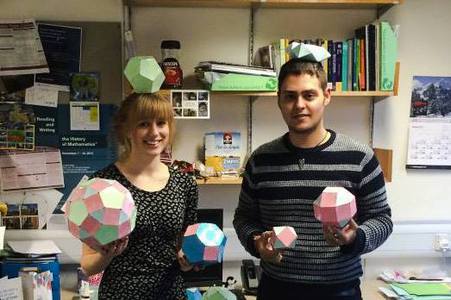
- Part II: Fractals everywhere
This time we studied the maths of fractals, which are mathematical objects with very surprising properties! We started off with a simple question: How long is the coastline of Great Britain? This turns out to be difficult to answer because coastlines are examples of fractals. In this workshop we looked at the difficulties in measuring fractals and saw how this related to their dimension. Then we applied what we learnt to study the length of the coastline of Great Britain.
Files:
- Presentation (pptx, pdf)
- Worksheet (docx, pdf)
Related links:
- Wikipedia page about fractals: http://en.wikipedia.org/wiki/Fractal
- Software Xaos to draw fractals: http://matek.hu/xaos
- Book "Fractals: A Toolkit of Dynamics Activities" by Robert L. Devaney, J. Choate and A. Foster
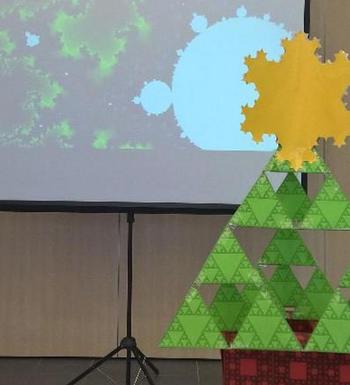
- Part III: Mapping the world
Finally, in the last talk of these series we studied the maths of projections and the creation of maps. Flat maps are more
useful than globes, however can we make maps that represent the Earth in an accurate way? Are
some projections better than others? How can we measure the distortion? What trajectories do airplanes follow?
Files:
- Presentation (pptx, pdf)
- Worksheet (docx, pdf)
Related links:
- Java applet with maps and projections: www.uff.br/mapprojections/mp_en.html
- Wikipedia page about maps: http://en.wikipedia.org/wiki/Map_projection
- Clip from the movie "Dimensions" about the stereographic projection: https://www.youtube.com/watch?v=Yv9bwNnK3zI\&list=PLelIK3uylPMGj__g3PeO9yg1QTCiKhwgF
- Book "Flatland: A Romance of Many Dimensions" by Edwin A. Abbott: http://en.wikisource.org/wiki/Flatland_(second_edition)
- Page with a lot of resources about maps: www.progonos.com/furuti/MapProj/Normal/TOC/cartTOC.html
- Similar workshop done by Xavier Massaneda at University of Barcelona (in Catalan): www.ub.edu/xtaller_mat/?q=node/10
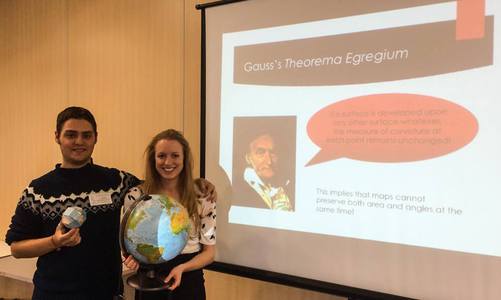
St. Paul's Cryptic Challenge
Where: St. Paul's Catholic School, Milton Keynes, UK
When: 27th November 2014
Who: Mairi Walker and me
Students: Year 7
In this session we will be looking at
cryptography, which is the maths of code breaking. Here in Milton Keynes we are
lucky enough to be near to Bletchley Park, which during World War II was home
to a secret team of code breakers, and is where Alan Turing famously cracked
the Enigma code and helped us to win the war. Today you will get the chance to
work as teams of code breakers in our cryptic challenge. Can you be the first
team to crack the four challenge codes?
Files:
- Presentation (pdf)
- Worksheet (pdf)
Related links:
- The Alan Turing Chryptography competition: www.maths.manchester.ac.uk/cryptography_competition
- Bletchley Park: www.bletchleypark.org.uk
- The Imitation Game (movie): www.theimitationgamemovie.com
- Original material: www.mathscareers.org.uk/wp-content/uploads/2014/05/CrypticChallenge.zip
- OU blog post about this workshop: www.open.ac.uk/blogs/per/?p=5346

|